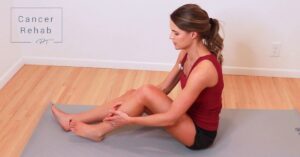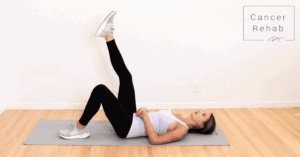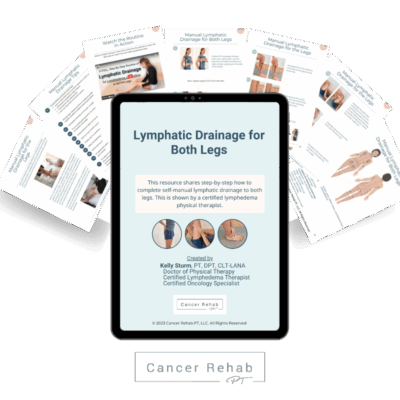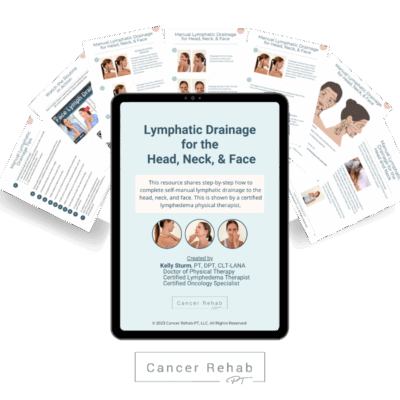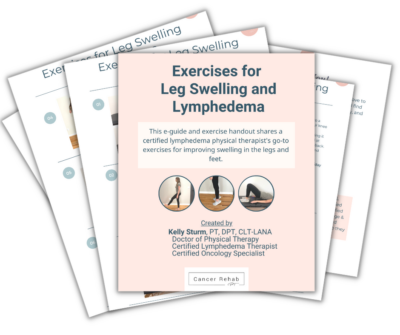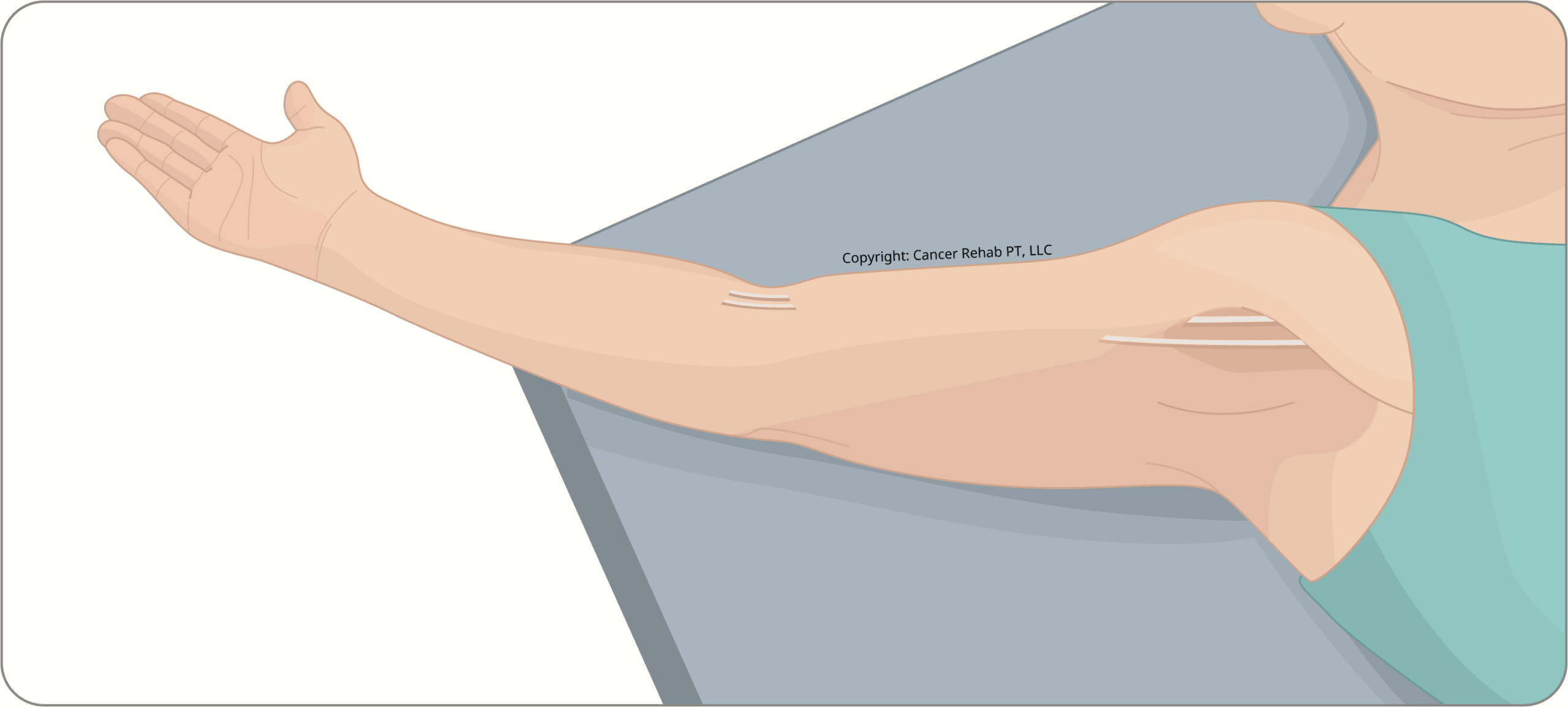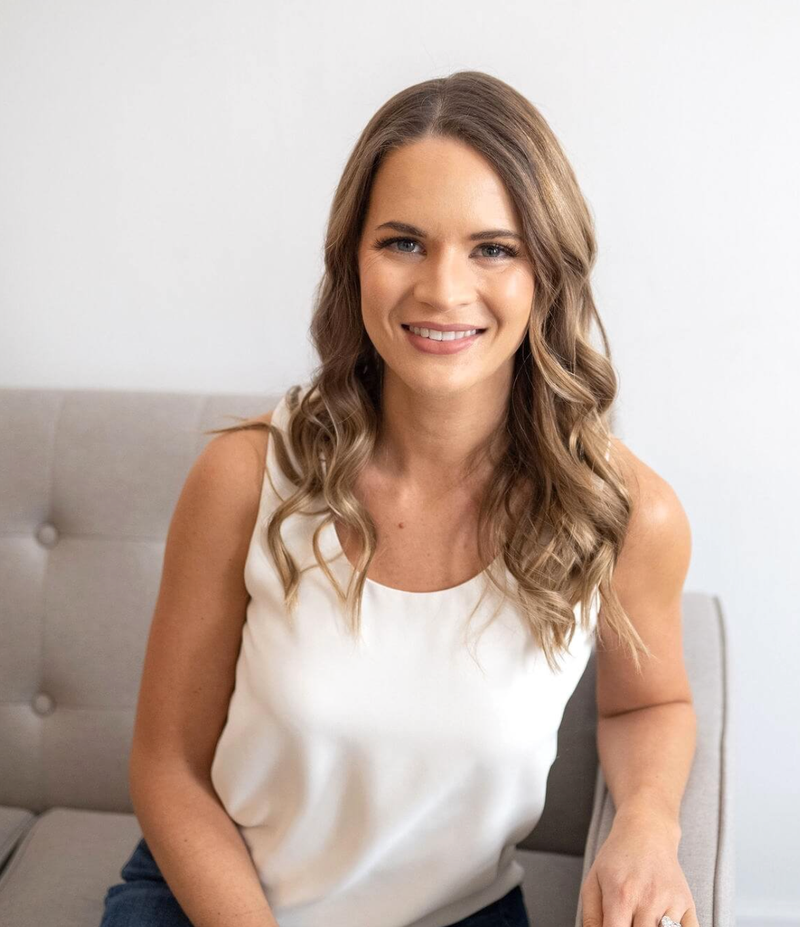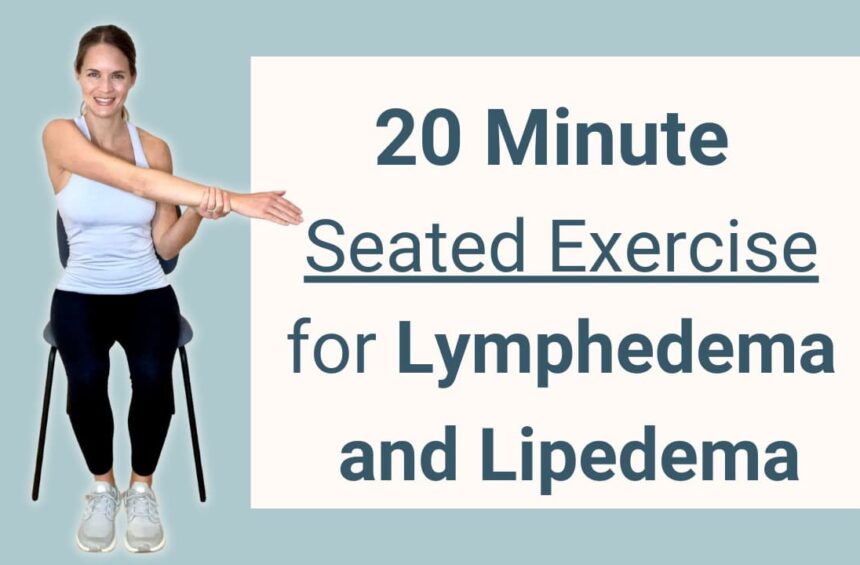Axillary Web Syndrome (AWS) – also known as cording – is a common but often overlooked side effect of breast cancer surgery and lymph node surgery.
It can present as fibrous bands or cords in the armpit area that can run down the arm. These cords can prevent you from being able to lift your arm and cause discomfort and pain. Even though cording is common, researchers are not sure what exactly causes it.
You don’t have to accept AWS and learn how to live with it. There are effective management strategies and physical therapy techniques that can help you get rid of the Axillary Web Syndrome and improve your quality of life.
👋 Hello, I’m Kelly Sturm, a Doctor of Physical Therapy (PT, DPT) and a Board-Certified Oncology Specialist, CLT-LANA. I share helpful resources for those living with and after breast cancer and lymphedema. Subscribe to my YouTube Channel, get my free guides, or learn more about my comprehensive program Breast Cancer Rehab.
Key Takeaways
- Axillary Web Syndrome (AWS), or cording, is a common post-operative condition, which can be managed with the right understanding and care for improved mobility.
- Exercises recommended by physical therapists are an effective way to break down scar tissue, improve range of motion, restore arm control, and manage AWS successfully.
- Taking proactive measures such as preventative stretches & exercises today can lead to a healthier life in the future!
What Is Axillary Web Syndrome (Cording)?
Axillary Web Syndrome (AWS), also known as cording, commonly occurs after breast cancer surgery or lymph node surgery, with some studies reporting rates as high as 88%. Some factors may increase the likelihood of AWS, such as a higher number of lymph nodes removed or more extensive breast cancer surgery.
Picture a web under your skin as fibrous bands or cords form in the armpit area, extending down the arm and possibly reaching the palm of the hand. These cords, though invisible to the eye, can cause a lot of discomfort, limiting your arm mobility and causing a feeling of tightness or constriction.
Cording doesn’t have to be a permanent condition. With appropriate understanding and care, AWS can be managed and improved.
Lymph Nodes Removal’s Role
The role that lymph nodes removal plays in AWS development is significant. The higher the number of lymph nodes removed during surgery, the greater the risk for AWS.
If you’ve had a large number of lymph nodes removed, it’s important to be mindful of the potential for AWS development and take proactive steps toward managing it.
Sentinel Node Biopsy, Axillary Lymph Node Dissection, and AWS
Sentinel Lymph Node Biopsy (SLNB) and an Axillary Lymph Node Dissection (ALND) are two common surgeries when managing breast cancer.
A Sentinel Lymph Node Biopsy (SLNB) is a surgery when 1-5 lymph nodes are taken to check if the cancer has spread to the lymph nodes. It is a minimally invasive procedure, but it can still result in AWS.
An Axillary Lymph Node Dissection (ALND) is when more than five lymph nodes are removed. Because of the higher number of lymph nodes removed, the risk of developing AWS is higher.
The healing period typically lasts 8-16 weeks following axillary surgery, during which most patients witness significant improvements in their AWS symptoms.
For more information on Axillary Web Syndrome, watch my YouTube video ↓
The Anatomy of Cording: Understanding Axillary Web Syndrome
Cords are exactly what they sound like. They are thin, guitar cord-like structures that can run from the armpit all the way down to the wrist in some cases. You can have multiple small cords or one single long and tight cord. Up to 50% of cords aren’t visible on the surface, so even if you don’t see the cords in your armpit or upper arm, you may still have invisible axillary cord formation.
The signs and symptoms of AWS can vary and may include:
- Mild discomfort
- Severe pain
- Feeling of tightness
- Visible or palpable cord-like structures under the skin
Cords typically show up 2 to 8 weeks after surgery, but in some cases, they can appear weeks or even months later. Some cords can go away on their own, but some may require management strategies and physical therapy treatment.
What Causes Axillary Cording?
The precise cause of AWS remains unknown. It’s believed to be related to scar tissue formation and inflammation from surgery or radiation. Think of these cords as strings of a puppet, bound down and restricted in scar tissue due to inflammation.
This inflammation damages small vessels in the area, leading to the formation of fibrotic cords characteristic of AWS, which can affect connective tissue.
Cording Is Not Something You Have to “Learn to Live With”
Axillary Web Syndrome is a manageable condition and often resolves within three months with the right treatment and exercises. Physical therapy is a highly recommended primary treatment for cording. It involves:
- Educational resources
- Physical therapy exercises
- Stretches and neural mobilization (nerve glides)
The main strategy is to stay proactive. Regular exercises and techniques can help you manage AWS effectively, reducing arm limitations and pain.
Exercises for Axillary Web Syndrome Relief
Think of cording as a stubborn knot that needs to be untangled. Physical therapy exercises can help unravel this knot, reducing discomfort, and restoring arm mobility.
You can do a variety of exercises, including stretching routines, strengthening movements, and manual therapy techniques. For best results, make sure to stay as consistent as you can with your routine.
→ You can find my favorite techniques and exercises for Axillary Web Syndrome in my program Breast Cancer Rehab.
Stretching Routines
Stretching routines can enhance flexibility and alleviate the pain associated with AWS, allowing you to move your arm with more freedom.
One of my favorite stretching exercises is the Sidelying Pec Stretch.
Lying on your opposite side, place your hand behind your head with the elbow pointing in front of you. Slowly rotate it open until you feel a mild stretch, hold it for a few seconds, and gently come back up. You can repeat this stretch 3-5 times, 1-2 times per day.
For more information and exercises, watch my YouTube Video↓
Nerve Glides/Flossing
Nerve flossing or nerve glides helps break down scar tissue and improve the range of motion.
Bring your arm up to shoulder height, or if the cord is too tight, bring it as high as it is comfortable. Keeping your elbow straight, bend back and forth at the wrist. If this still doesn’t provide a gentle stretch or tension, then add your ear to the shoulder with the wrist movement. Do this movement slowly, back and forth. Be sure to avoid overstretching and doing this movement for long periods so you are not sore.
Innovations in AWS Treatment: Beyond Physical Therapy
As technology advances, so does the treatment for AWS. Beyond the realm of physical therapy, we have seen innovations like laser therapy and medication for pain management. These advancements can reduce symptoms and help improve your quality of life.
Laser Therapy’s Effectiveness
The success of laser therapy in treating AWS can vary depending on the thickness of the scar tissue. Using a low-level laser, physical therapists can break down hardened scar tissue, thereby reducing pain and improving flexibility. That said, the effectiveness of laser therapy can vary depending on the individual’s condition.
Medication and Pain Management
When it comes to pain management in AWS, non-steroidal anti-inflammatory drugs (NSAIDs) can be helpful for AWS patients, offering relief from the pain. Consult with your doctor to get a prescription.
Living with AWS: Tips for Daily Life
Having AWS doesn’t imply that your life must come to a standstill. You can adapt and navigate around the challenges of AWS to redefine your new normal. Simple habits, such as incorporating gentle stretching exercises into your routine, can make a world of difference. I share exercises and techniques that you can easily do at home in Breast Cancer Rehab.
Risk Factors and Prevention of Axillary Web Syndrome
Identifying the risk factors for cording can help in taking preventive measures. Invasive axillary surgery, low body mass index (BMI), and smoking are some of the risk factors for AWS. Post-operative exercises and stretches can help prevent AWS or minimize its impact.
Summary
You don’t have to accept Axillary Web Syndrome as your new normal. With the right knowledge, proactive measures, and effective treatment options, you can manage AWS effectively. You can find exercises, stretches, and manual techniques to get rid of cording in my program Breast Cancer Rehab.
Frequently Asked Questions
What are the symptoms of axillary web syndrome?
Axillary web syndrome is characterized by thick or thin cords in the armpit which can extend down the arm, causing pain and difficulty in reaching, lifting your arm, or straightening the elbow.
How do you fix axillary web syndrome?
Axillary Web Syndrome can be treated with physical therapy consisting of stretching, flexibility exercises, range of motion exercises, massage therapy, and lymphatic massage. With the right treatment, most cases of this condition can be resolved.
What causes axillary cording?
The exact causes of axillary cording are unknown. It is likely caused by inflammation of lymph or blood vessels after being damaged due to breast surgery or cancer treatment, such as radiation.
What exercises can help manage AWS?
Stretching, strengthening and manual therapy can all be beneficial for managing AWS. These exercises can help reduce symptoms, increase joint range of motion, and promote better posture and movement efficiency. You can find different exercises and techniques in my program Breast Cancer Rehab.
Can AWS be prevented?
Yes, with proper post-operative exercises and stretches, cording can be prevented or its effects can be minimized.

